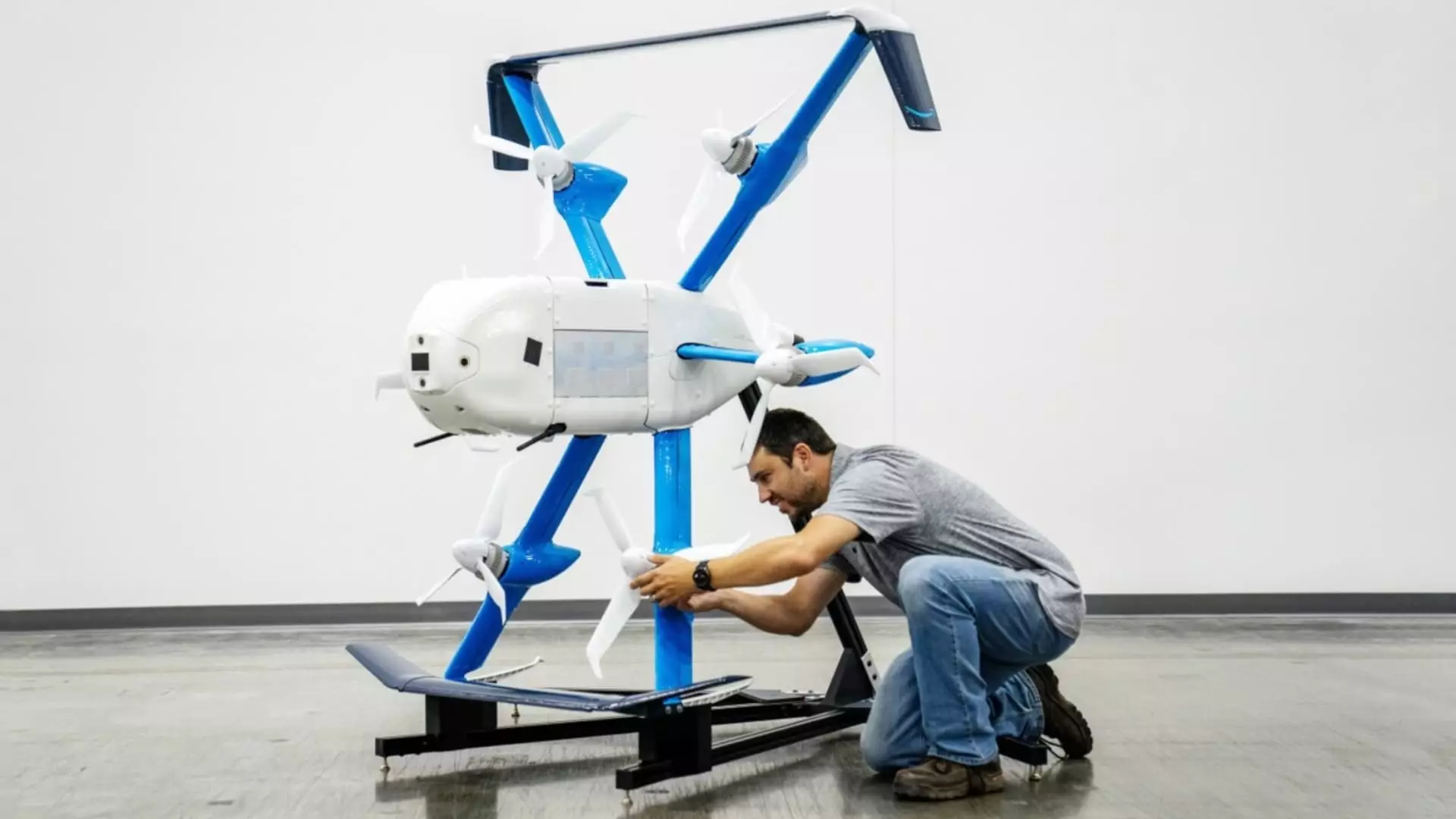On Tuesday, Amazon revealed a significant advancement in its drone delivery program, securing regulatory approval to operate a revamped, smaller drone labeled the MK30. This step represents another chapter in Amazon’s ongoing endeavor to integrate drone technology into its delivery system. First introduced in November 2022, the MK30 comes equipped with improvements intended to enhance its operational efficiency, including the ability to withstand light rain and a doubling of its flight range compared to previous iterations. The Federal Aviation Administration (FAA) has granted Amazon permission to conduct deliveries beyond the direct sight of operators, a critical development in drone logistics that allows more flexible route planning and a wider operational area.
Such regulatory milestones are crucial as they outline not only the technological evolution but also the framework within which drone deliveries will function. With the FAA’s permissions extending to the area around Tolleson, Arizona, Amazon aims to establish robust delivery routes near its warehouse, capitalizing on the proximity to their logistics network. This step is strategically aligned with Amazon’s goal of accelerating delivery times for customers, showcasing the company’s commitment to integrating drone technology into its existing infrastructure.
However, the journey to a fully functional drone delivery service has been plagued by delays and setbacks. Initially announced over a decade ago by Amazon founder Jeff Bezos, the promise of drone deliveries within five years seems distant today, raising questions about the feasibility and scalability of this ambitious vision. As the company continued to invest billions into this program, it faced not just regulatory challenges but also internal restructuring, including layoffs and the departure of key personnel. The slow progress of Prime Air has come under scrutiny, particularly as the market has become increasingly competitive, with significant players like UPS, Walmart, and various drone startups vying for a slice of the delivery market.
Beyond operational hurdles, public sentiment towards drone deliveries appears to be mixed. In College Station, Texas, for instance, there has been a notable backlash from residents concerned about the noise generated by drone operations. Such local opposition poses an ongoing challenge for Amazon as it attempts to carve out a viable niche in the delivery landscape. The unwillingness of some communities to embrace drone technology can hinder Amazon’s deployment strategies, forcing the company to seek new locations that may be more amenable to such disruptive change.
In light of these challenges, Amazon has made strategic leadership changes to help guide the drone program. The hiring of David Carbon, a former Boeing executive, as head of the Prime Air initiative signals a commitment to revitalizing the program and addressing both regulatory and public relations challenges. Transitioning someone with extensive experience in aerospace into a leadership position at Prime Air may offer fresh perspectives on how to navigate the complexities of both the regulatory environment and community acceptance.
Moreover, the broader corporate climate at Amazon has also shifted. Under CEO Andy Jassy’s leadership, the company has indicated a stringent approach to cost management, which in turn has affected several operations, including the Prime Air program. Such fiscal prudence, while necessary for sustainable growth, raises questions about the long-term commitment to ambitious projects like drone deliveries.
As Amazon embarks on this new phase of drone testing, it must contend with a rapidly evolving landscape of competitors. Companies like Wing, owned by Alphabet, are also working tirelessly to establish drone delivery solutions, and others, including startups like Zipline and Matternet, are advancing their technologies and logistics strategies as well. The competitive pressure from these various entities could spur Amazon to innovate faster, but it also risks spreading the company’s resources thin in its quest for market dominance.
As Amazon ramps up its drone delivery program with the MK30, it faces a multifaceted journey punctuated by regulatory approvals, public skepticism, and intense competition. While advancements are being made, the specter of setbacks and challenges looms large, emphasizing that the path to transforming delivery services through drones is anything but straightforward. The coming months will be crucial in determining whether Amazon’s vision will materialize as a groundbreaking success or remain a dream deferred.

